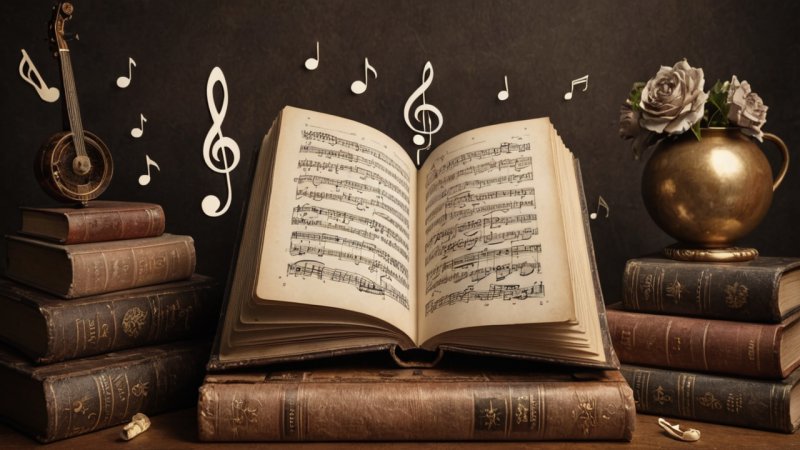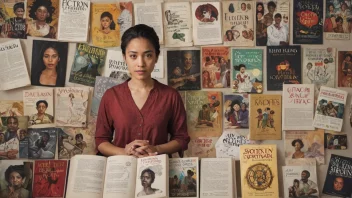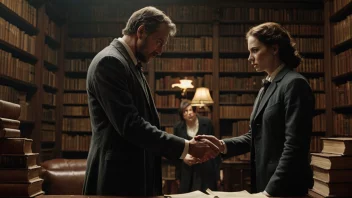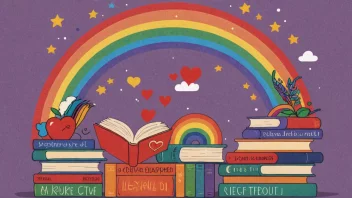Throughout history, literature and music have coexisted in a dynamic relationship, influencing and enriching each other in profound ways. Classic literature, with its timeless narratives and evocative language, has inspired countless musical compositions, while music has often served as a backdrop to literary exploration. This article delves into the intricate bond between classic literature and music, exploring how they intertwine to create a multifaceted cultural experience that transcends time and genre.
The Intersection of Words and Melodies
At the core of both literature and music lies the power of expression. Authors and composers alike seek to convey emotions, tell stories, and evoke imagery through their chosen mediums. The rhythmic qualities of poetry, for instance, often mirror musical patterns, creating a natural synergy between the two art forms. This section examines the ways in which the structure and rhythm of language can translate into musical composition.
The Poetic Nature of Music
Many classic literary works are inherently musical in nature, utilizing meter and rhyme schemes that resonate with the auditory experience of music. Poets like William Wordsworth and Emily Dickinson employed rhythmic patterns that can be easily set to music, while the lyrics of songs often draw inspiration from poetic forms. For example:
- Wordsworth’s Lyrical Ballads: This seminal collection of poems reflects the musicality of the English language, often described as songs of nature, love, and the human experience.
- Dickinson’s Use of Common Meter: Dickinson frequently utilized a common meter that aligns with hymnal melodies, making her poems easily singable.
Literature as a Source of Inspiration
Many composers have turned to classic literature for inspiration, creating musical works that embody the themes and characters of beloved texts. From operas to symphonies, the influence of literature on music is profound. Notable examples include:
- Wagner’s Ring Cycle: Richard Wagner’s monumental opera cycle is heavily influenced by Norse mythology and Germanic epic poetry, showcasing the interplay between narrative and musical composition.
- Prokofiev’s War and Peace: This opera, based on Leo Tolstoy’s epic novel, captures the emotional depth and complexity of the original text through its musical score.
Thematic Resonance: Love, Tragedy, and the Human Condition
Classic literature often tackles universal themes such as love, tragedy, and the human condition—subjects that resonate deeply within music as well. This section explores how these enduring themes manifest in both literature and music, creating a rich tapestry of artistic expression.
The Theme of Love
Love, in its myriad forms, has been a central theme in both literature and music. From Shakespearean sonnets to operatic arias, the exploration of love has inspired countless works. Consider:
- Shakespeare’s Romeo and Juliet: The tragic love story has been adapted into numerous ballets, operas, and musicals, showcasing the timelessness of its themes.
- Chopin’s Nocturnes: These piano pieces evoke a sense of longing and romance, often considered musical love letters.
Tragedy and Loss
Tragedy is another theme deeply embedded in both classic literature and music. The exploration of loss, grief, and the human experience is prevalent in works such as:
- Hemingway’s A Farewell to Arms: The novel's exploration of love amidst the backdrop of war has inspired musical adaptations that capture its emotional weight.
- Mahler’s Symphony No. 5: This symphony, with its famous Adagietto, encapsulates themes of love and loss, reflecting the human experience in a profound way.
Musical Adaptations of Classic Literature
The adaptation of classic literature into musical forms—whether through opera, musical theater, or orchestral works—demonstrates the adaptability of these narratives across different mediums. This section examines notable adaptations:
Opera
Opera has a rich history of adapting literary works into musical performances. Renowned operas that draw from classic literature include:
- Verdi’s La Traviata: Based on Alexandre Dumas’ play, this opera explores themes of love and sacrifice in a way that resonates with audiences.
- Puccini’s Tosca: This opera, rooted in Victorien Sardou’s play, captures the essence of love, betrayal, and political tension through powerful musical expressions.
Musical Theater
Musical theater has also embraced classic literature, bringing stories to life through song and dance. Examples include:
- Les Misérables: Based on Victor Hugo’s epic novel, this musical adaptation captures the struggles of its characters through powerful musical numbers.
- Wicked: While not a direct adaptation, this musical draws from L. Frank Baum’s The Wonderful Wizard of Oz, exploring themes of friendship and identity.
Literary Themes in Musical Lyrics
Many contemporary musicians draw inspiration from classic literature, weaving literary themes into their lyrics. This section explores how modern music reflects the influence of classic literature:
Storytelling in Lyrics
Musicians often employ storytelling techniques reminiscent of classic literature, creating narratives that resonate with listeners. For example:
- Bob Dylan: Dylan’s lyrics frequently reference literary figures and themes, showcasing a deep appreciation for the written word.
- Taylor Swift: Swift’s storytelling prowess draws parallels to classic literary narratives, creating songs that evoke emotions similar to those found in literature.
Intertextuality and References
Many songs reference classic literary texts, creating layers of meaning for the listener. Notable examples include:
- The Decemberists’ “The Mariner’s Revenge Song”: This song pays homage to Coleridge's “The Rime of the Ancient Mariner,” weaving literary references into its narrative.
- Iron & Wine’s “The Night Descending”: This song draws on themes of nature and introspection, reminiscent of Romantic poetry.
The Future of the Relationship Between Literature and Music
As we move into the future, the relationship between literature and music continues to evolve. This section explores potential trends and innovations that may shape this dynamic bond.
Cross-Genre Collaborations
We are witnessing an increase in cross-genre collaborations, where authors and musicians come together to create multidisciplinary works. This trend reflects a growing appreciation for the interconnectedness of different art forms.
Digital Innovations
Digital platforms are facilitating new ways for literature and music to intersect. Audiobooks, podcasts, and music streaming services offer innovative opportunities for artists to share their work and reach wider audiences.
Conclusion
The relationship between classic literature and music is a testament to the enduring power of storytelling and emotional expression. Both art forms offer unique insights into the human experience, enriching our understanding of love, loss, and the complexities of life. As literature continues to inspire music and vice versa, we can look forward to a future where these two mediums coalesce to create even more profound cultural experiences.






